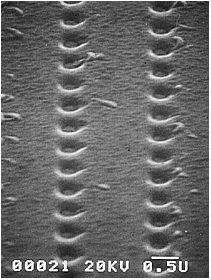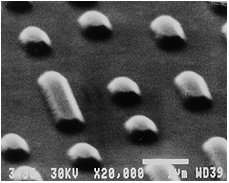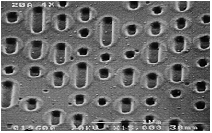
A laserdisc
The 12" Laserdisc is the father of the Compact Disc. Plants that make CDs pay royalties to Pioneer, Philips and Sony based on patents issued for the LD format. Secondly, LDs are ANALOG and CDs are DIGITAL. Laserdiscs are not just big CDs.

As you can see, all the pits on a LD are almost all the same size and need to be sharp and well defined to reduce video noise. With some 40 billion pits on one side, separating the still warm disc from the nickel mold can be troublesome. Additionally, each "half" of a laserdisc is made separately then literally glued to another. The point is that LD's are a pain in the butt to make.

This photo shows how standard CD pits look. The next photo shows a four times density experimental disc.

Standard CDs, by comparison, are far easier to make. Philips and other learned that if the packing density was made less dense, separating CDs from the mold would be easier. In every category, the CD format was "less ambitious". DVD discs are reclaiming the tight pit densities given up for the CD format.
All three shots were taken by a scanning electron microscope.